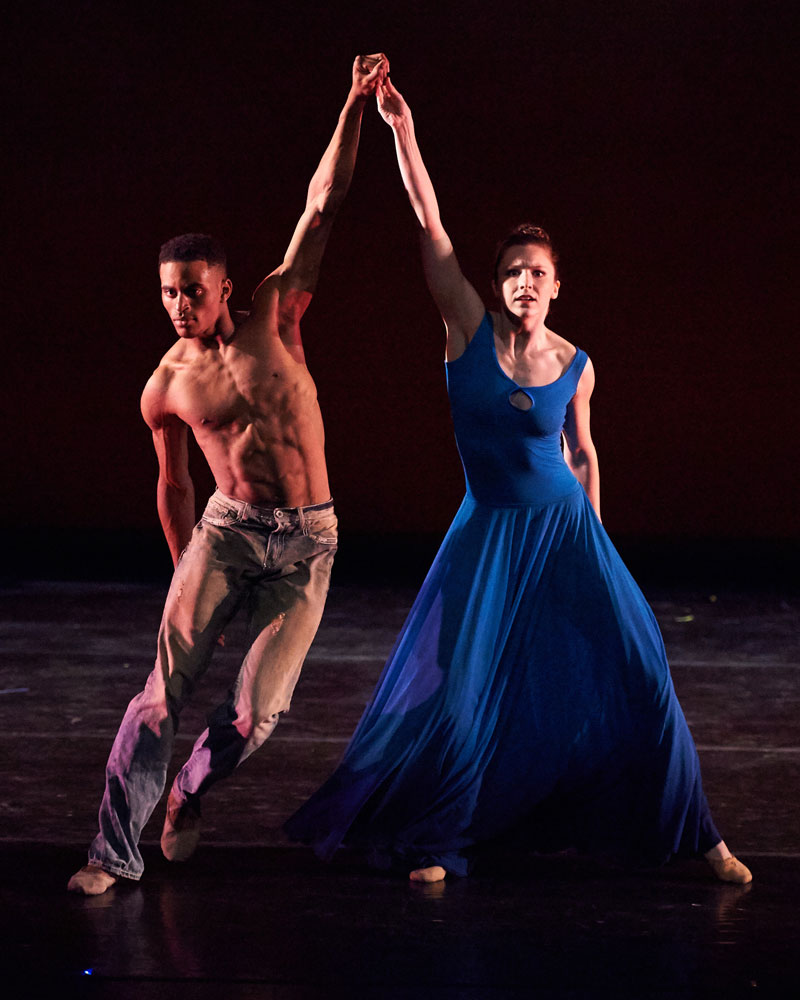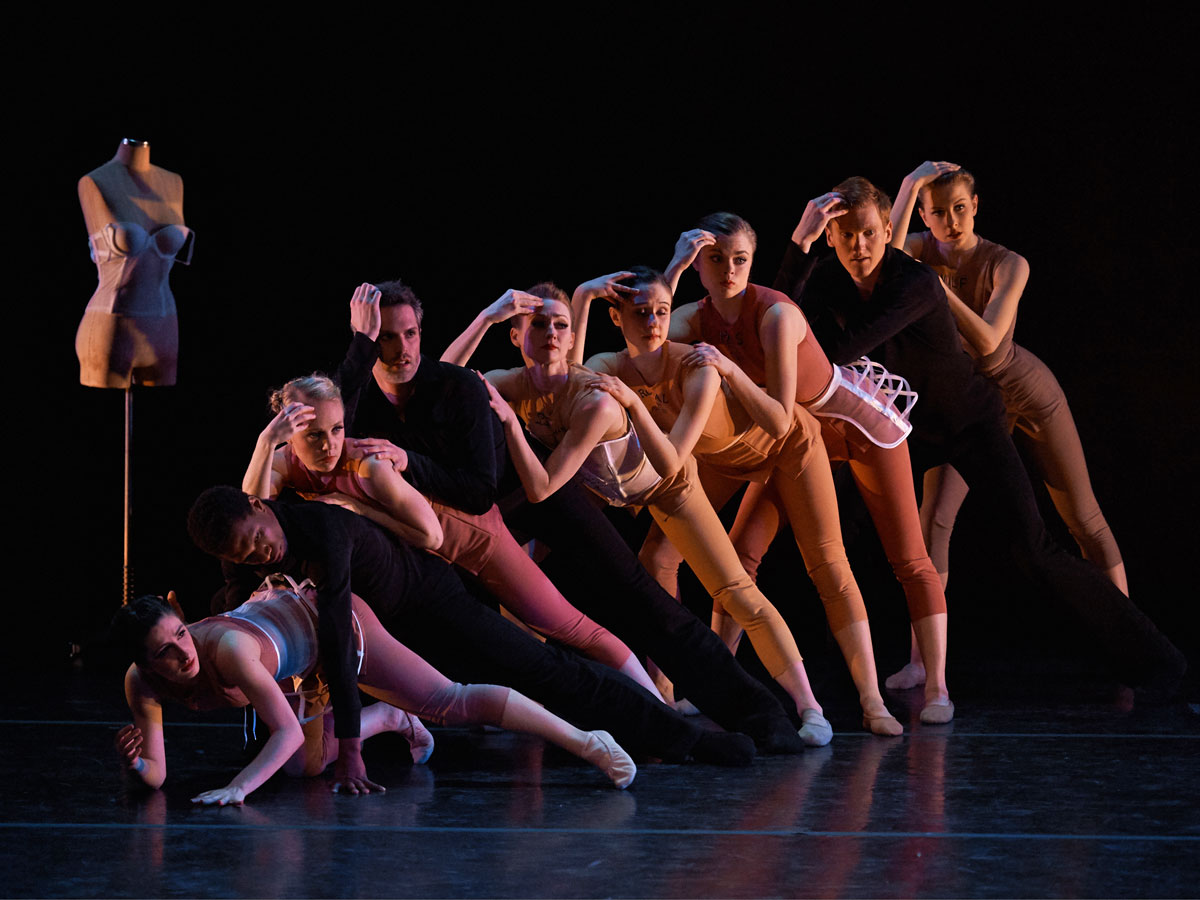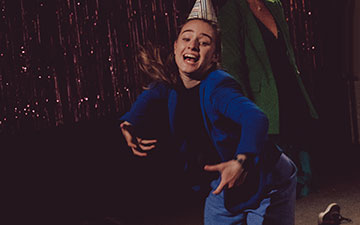
© Ari Denison. (Click image for larger version)
Ballet Memphis
Confluence, I Am a Woman: Moult, The Darting Eyes, Politics
New York, Joyce Theater
27 October 2015
www.balletmemphis.org
www.joyce.org
Going Their Own Way
Ballet companies outside of the big ballet hubs face a series of decisions. Whom do they serve? What are their aspirations? Do they want to be judged alongside their larger cousins in the big cities or do they want to focus on their core audience back home? On the one hand you have a company like Ballet West, performing works by Frederick Ashton and Balanchine, pushing hard to be recognized from coast to coast. On the other you have a company like Ballet Memphis, zeroing in on local themes, encouraging the talents of homegrown choreographers, and employing local artists.
Both are viable approaches, and both, of course, have their pitfalls. By taking this hyper-local approach Ballet Memphis, currently appearing at the Joyce, exposes itself to being seen as not quite up-to-par, particularly in a place like New York. And it’s true, none of the works on the current program is perfect. (It must be said, the dancers are very fine, and the company is more diverse than most, which is heartening to see.) But it’s clear that the company has an identity and a sense of place; it doesn’t look like any of a dozen other mid-sized troupes across the country doing generic repertory.

© Andrea Zucker. (Click image for larger version)
The quadruple bill at the Joyce includes two works by company members – Steven McMahon and Rafael Ferreras – as well as a commission from a woman choreographer, Gabrielle Lamb, and another from Matthew Neenan, an increasingly familiar name. Both the Neenan and the Ferreras have Memphian themes. Neenan’s The Darting Eyes uses imagery inspired by Mississippi River baptisms: processions, floating bodies, prayer circles. (The music consists of gospel songs, bluegrass, and, jarringly, Handel.) Ferreras’s Politics, for eight women, combines dancers on pointe with dancers in sneakers, the latter moving in a style known as jookin’, a Memphian derivation of hip-hop. It too is set to spirituals, sung onstage by a septet of local singers.
If only the pieces were better. The first, Steven McMahon’s Confluence, is a pretty but slight ballet performed in soft slippers and long saffron-and-orange dresses. It seems to deal with spiritual yearning, or so the music, gospel recordings by Mahalia Jackson and Mavis Staples, would imply. Its central figure is the beautiful, long-limbed Virginia Pilgrim Ramey, featured in slow, stretchy choreography that shows off her line, high arabesque and supple back.

© Ari Denison. (Click image for larger version)
Neenan’s The Darting Eyes, however, is a disappointment: a rather chaotic piece that zig-zags from one mood and style to another. A golly-gee caper for two couples is followed by a solo for a sophisticated lady who plays incessantly with her long strand of pearls while teetering on pointe. Then comes an eccentric, semi-erotic pas de deux for the excellent Hideko Karasawa and Travis Bradley in which he carries her around like a doll, she sticks out her tongue, and her eyes flutter. Then another, anguished and forlorn, for a man with one long sleeve (Jared Brunson) and a woman in a long blue dress (Ramey once again). As is often the case with Neenan, you get the sense that there’s a backstory, but he hasn’t found a way to make it legible to the audience. It’s opaque. As a result, The Darting Eyes ends up looking like a grab-bag of ideas.

© Ari Denison. (Click image for larger version)
There’s nothing terribly political about Rafael Ferreras’ Politics, nor is it clear why it is set on a stage littered with tables and chairs, but the piece itself is good fun: four jookers and four ballerinas play around, compare skills, and partner one another. The jookers glide and do quick, bouncy footwork or move like dolls, their heads seemingly disconnected from their torsos. The ballerinas leap and spin and pose in arabesque. Then they all take their shoes off and dance together. The tone is collegial and friendly; for once, the collision of styles isn’t presented as a battle for supremacy. The best part, though, is the gospel singing of the seven vocalists from the Hattiloo Theatre in Memphis, from the side of the stage.
Without a doubt, the most eccentric piece on the program is Gabrielle Lamb’s I Am a Woman: Moult, originally commissioned as part of an evening of works by women choreographers. (A noble cause.) Women in corsets and hoops arrange themselves in puppet-like formations, touching each other with the tips of their fingers. Mannequins are wheeled on and off by a small contingent of men. Meanwhile, a folk singer (Cat Power) gives a breathy rendition of the Rolling Stones’ “Satisfaction”. Finally, the moulting occurs. It’s rather like being trapped in a Bjork music video, full of elfin creatures behaving in ways one can’t quite understand.

© Ari Denison. (Click image for larger version)
What’s clear is that Ballet Memphis doesn’t really care what we think. It has its own agenda, one that doesn’t include bending to big-city tastes. More power to them. The company will perform this and another, no doubt equally eccentric, program at the Joyce through the weekend.
















You must be logged in to post a comment.